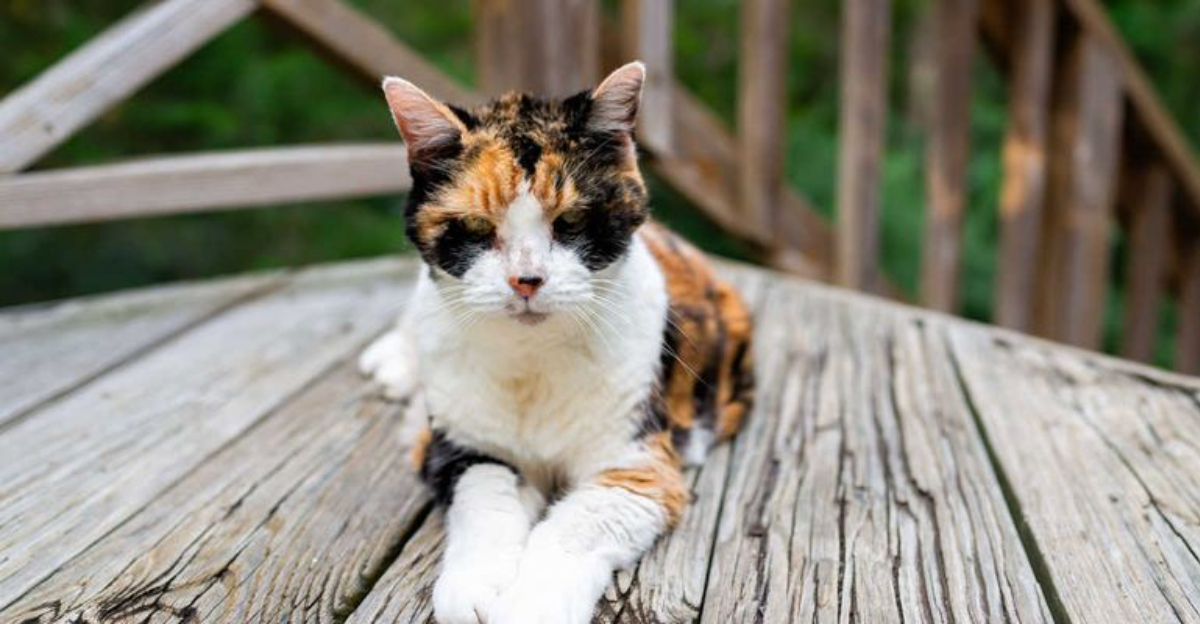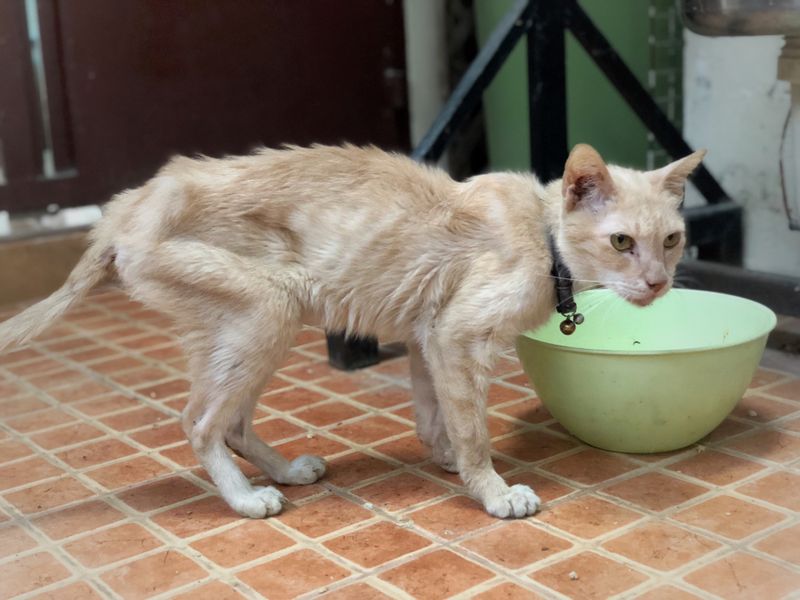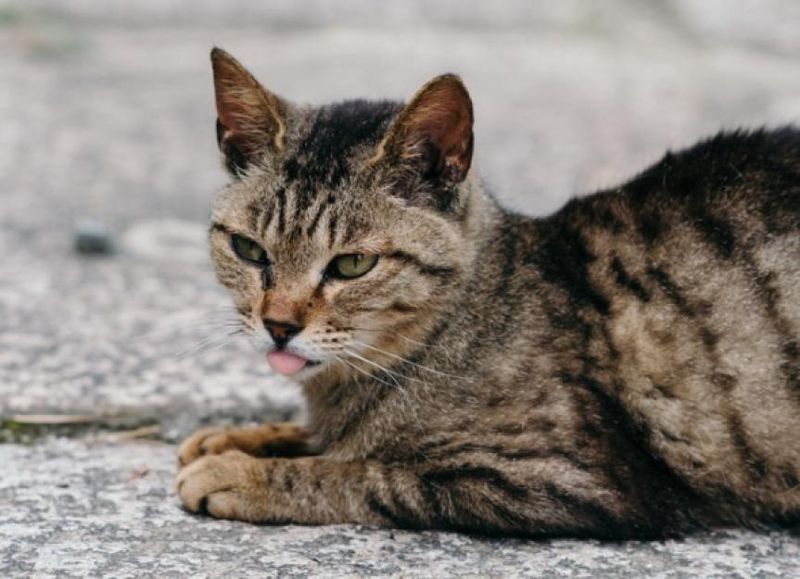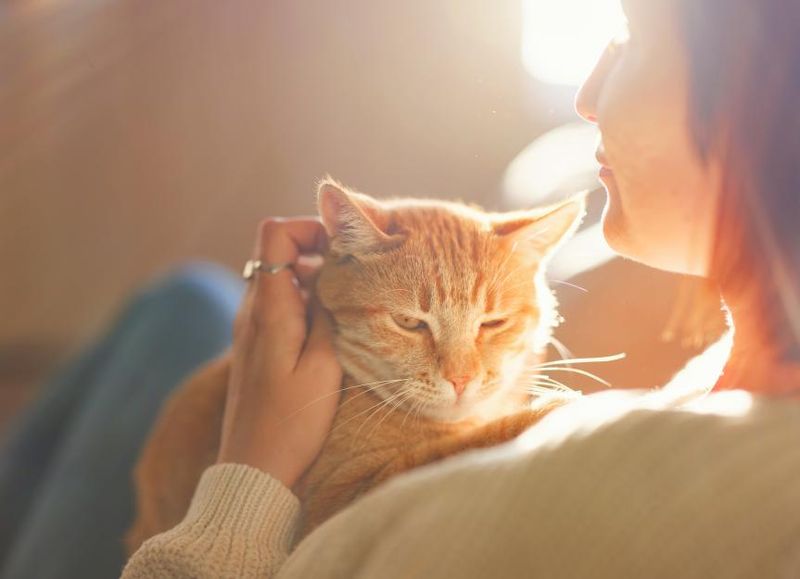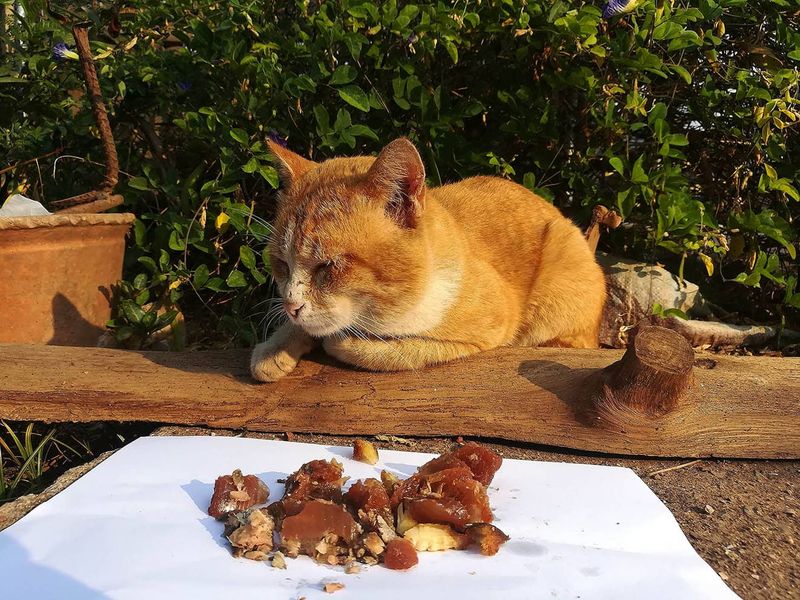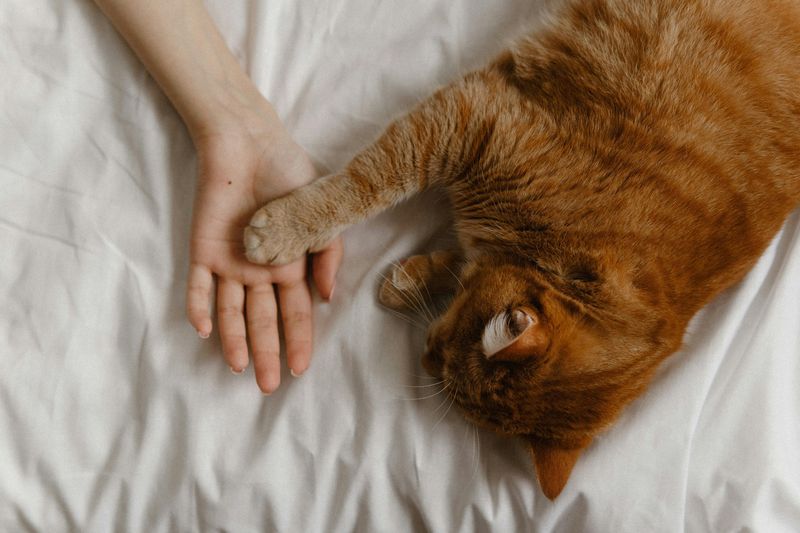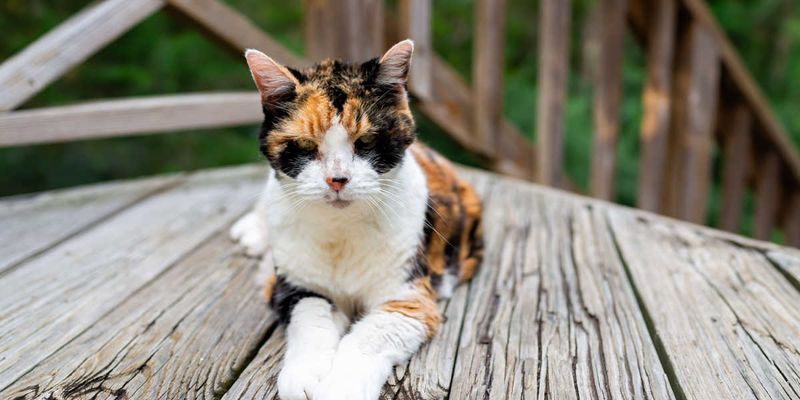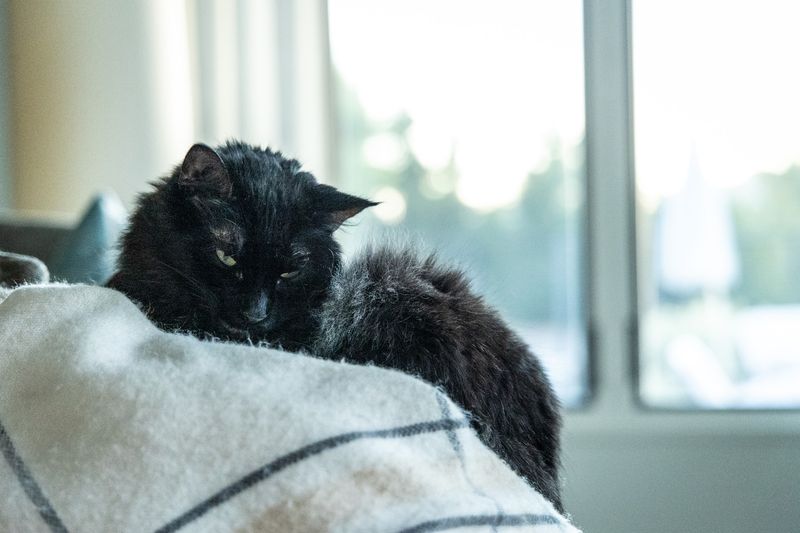📖 Table of Content:
- 1. Dramatic Weight Loss
- 2. Extreme Lethargy and Withdrawal
- 3. Breathing Changes and Difficulties
- 4. Loss of Bladder and Bowel Control
- 5. Decreased Grooming and Disheveled Appearance
- 6. Refusing Food and Water
- 7. Temperature Changes in Extremities
- 8. Behavioral Changes and Confusion
- 9. Creating a Peaceful Goodbye
Watching a beloved cat approach the end of her life is heartbreaking for any pet owner. Cats are masters at hiding illness, but there are telling signs that can help you recognize when your feline friend is nearing her final days. Understanding these signals allows you to provide comfort and proper care during this difficult transition. Here’s what to watch for and how to make your cat’s final journey as peaceful as possible.
1. Dramatic Weight Loss
Sudden or severe weight loss often signals serious health issues in aging cats. Your once plump kitty may become noticeably bony, with a prominent spine and hip bones that weren’t visible before. This happens as her body begins to shut down and can’t properly process nutrients.
Weight loss accelerates as cats near the end of life. They might lose 20% or more of their body weight. If you notice your cat becoming significantly thinner despite eating normally or refusing food altogether, consult your veterinarian immediately.
Offering wet food with strong aromas or slightly warming meals can sometimes entice a reluctant eater. Hand-feeding small amounts frequently throughout the day may help maintain strength during this difficult time.
2. Extreme Lethargy and Withdrawal
Cats naturally slow down with age, but end-of-life lethargy goes beyond normal aging. Your once active companion may spend entire days in one spot, showing little interest in toys, treats, or family interaction. This withdrawal isn’t personal—it’s her body conserving energy.
Many cats seek isolation when death approaches. Your normally social kitty might hide in dark, quiet spaces like closets or under furniture. This behavior stems from a wild instinct to protect themselves when vulnerable.
Create comfortable resting spots in her favorite areas with soft bedding and easy access to necessities. Respect her need for space while checking on her regularly. Gentle pets and quiet companionship offer comfort without overwhelming her.
3. Breathing Changes and Difficulties
Labored breathing often appears as death approaches. Your cat’s breathing pattern may become irregular—sometimes rapid and shallow, other times with long pauses between breaths. This condition, called Cheyne-Stokes respiration, signals that body systems are failing.
Open-mouth breathing or panting in cats always requires immediate attention. Unlike dogs, healthy cats rarely pant. You might notice her sides heaving with each breath or hear unusual sounds like wheezing or gurgling.
Keep her comfortable by elevating her head slightly with a small pillow. Maintain room temperature on the cooler side to ease breathing difficulties. Avoid stressful handling that might further compromise her breathing, and consider humidifying the air if it seems to help.
4. Loss of Bladder and Bowel Control
As body systems begin to shut down, many cats lose control over elimination functions. Your previously fastidious feline may urinate or defecate outside the litter box, sometimes while sleeping or resting. This isn’t behavioral but physical—muscles controlling these functions are weakening.
Waterproof pads placed under your cat can protect bedding and furniture. Gentle cleaning with warm water and pet-safe wipes prevents skin irritation from accidents. Keeping her rear end clean is essential for comfort and dignity.
Multiple shallow litter boxes placed in easily accessible locations may help a mobility-challenged cat. For severely weakened cats, veterinarians can recommend absorbent diapers or pads designed specifically for pets during end-of-life care.
5. Decreased Grooming and Disheveled Appearance
Cats are naturally meticulous groomers, spending hours daily maintaining their coats. When self-grooming stops, it signals a serious decline. Your cat’s fur may appear dull, matted, or greasy, especially around the rear end and back where she can no longer reach.
Body odor might develop as natural cleaning habits cease. This neglect isn’t laziness—it shows your cat lacks energy for even basic self-care tasks that were once instinctual.
Help maintain her dignity with gentle brushing sessions using a soft brush. Clean difficult areas with slightly warmed, damp cloths. Focus on comfort rather than perfection, stopping if grooming seems stressful. Waterless shampoos formulated for cats can help with serious soiling without the trauma of bathing.
6. Refusing Food and Water
Appetite loss is one of the most common end-of-life signs in cats. Your previously food-motivated kitty may sniff meals then walk away, or ignore food entirely. This natural process occurs as metabolism slows and the body requires less energy.
Dehydration follows as water intake decreases. Check for signs by gently lifting the skin at her shoulders—if it stays “tented” rather than snapping back, she’s becoming dehydrated. Dry gums and sunken eyes also indicate fluid loss.
Offer favorite foods warmed slightly to enhance aroma. Use syringes to provide small amounts of water or broth if she’ll accept it. Ice chips sometimes appeal when drinking stops. Remember that forcing food or water can cause distress—comfort becomes the priority over nutrition in final days.
7. Temperature Changes in Extremities
Cold paws, ears, and tail tip often indicate declining circulation as the heart weakens. Blood flow prioritizes vital organs, leaving extremities noticeably cooler to touch. This cooling process typically starts at the paws and gradually moves upward.
Many dying cats experience dramatic temperature fluctuations. Your cat might feel cold one moment, then uncomfortably warm the next as her body loses the ability to regulate temperature. These changes can occur even in comfortable room conditions.
Provide adjustable warmth with heated beds set on low settings or warm water bottles wrapped in towels. Keep blankets available but don’t force them if she seems uncomfortable. Monitor for signs of overheating, like panting or restlessness, and adjust accordingly. Gentle massage of cold extremities can temporarily improve circulation and provide comfort.
8. Behavioral Changes and Confusion
Mental changes often accompany physical decline in dying cats. Your normally affectionate cat might suddenly resist handling or, conversely, a typically independent cat may become clingy. These personality shifts reflect physical discomfort or neurological changes as organs begin failing.
Disorientation resembling feline cognitive dysfunction may intensify. Your cat might stare at walls, vocalize strangely, or seem confused about familiar surroundings. Some cats pace restlessly or appear unable to settle comfortably anywhere.
Maintain consistent routines to minimize confusion. Keep her environment calm with minimal changes to furniture arrangement. Speak in soothing tones even if she seems unresponsive. Night lights help prevent disorientation after dark. For anxiety or restlessness, veterinarians can recommend appropriate comfort medications that ease distress without causing additional harm.
9. Creating a Peaceful Goodbye
Quality of life becomes the central focus in your cat’s final days. Hospice-style care at home emphasizes comfort over curative treatment. Your veterinarian can provide pain medications, anti-nausea drugs, or mild sedatives that ease suffering without prolonging the inevitable.
Consider consulting a veterinarian who offers at-home euthanasia services. This option allows your cat to remain in her familiar environment, avoiding the stress of final car rides and clinical settings. Many pet parents find this creates a more peaceful transition.
Allow yourself permission to grieve. Saying goodbye to a beloved companion brings profound sadness. Support groups specifically for pet loss exist online and in many communities. Remember that honoring your cat’s memory can be healing—through photos, memorial items, or even supporting animal shelters in her name.
